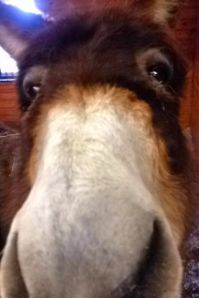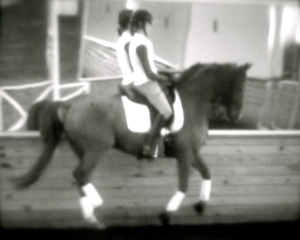I love connecting the dots. I love the way the world seems to grow smaller and smaller. I love learning about mutual friends and being able to send hugs through them to loved ones on the other side of the country. “Hey, you know how cool that person is too?!” It’s so fun discovering an idea, a lesson, a person, a place in the world and then noticing all the other people around you who share that with you. It’s like learning a new word and then noticing it in your life every other day for a week. I love learning about how similar we all are – finding out that I’m SO not the only one. And I love the way that people can grasp the same concept but go on to teach it with their own style – the way that different people can shine their own lights upon an idea until the whole lesson is illuminated.
Courtney and Lendon work so well together. In many ways they aim to teach the same thing, but they compliment each other in the way they approach it – using different phrases or exercises to trigger the correct response. Having the right connection and good half halts has been quite the theme these days (perhaps forever?) There was a point in Bimini’s canter work with Lendon when we just cantered around on a circle occasionally shortening a little and going forward again. I think Bimi’s butt was a bit tired from our pirouette work with Courtney the day before and his canter was getting sticky; instead of sitting down to shorten he was pushing down in his shoulders and coming down in the bridle. It was an opportunity to work on our connection. Lendon approached it much like Courtney has been, and one little exercise seemed to make their thoughts come together for me.
When Bimi was sticky and pushing down, Lendon had me give the reins for a stride or two – the canter was instantly better. Hmm. I don’t think that I’m holding. I think that I’m following and making corrections with my seat and legs, but when the reins disappear and everything gets better, obviously something’s been going on with my arms, which they’ve been keeping secret from my brain. Lendon had me think of it this way. At first I was keeping connection with the reins for say, four strides and giving all the way for one or two; now, for this exercise she wants me to give the reins for four strides and use the reins however I need to for just one stride. She gave me a deadline – a pretty short one. Do what I need to do with my hands and then get outta Dodge!
The end goal is in no way to ride around with loose reins or to only have connection when I’m correcting! It’s really important to have steady, following contact. But when I so clearly knew I was only allowed one stride to have a chat with his mouth, my correcting aids were efficient enough that they could be truly passive for the four strides following. Therefore, I was a lot more effective than when my arms were sorta kinda doing something a lot of the time but lying to me saying they were not. Come on body, stop holding on too long to what’s not helping you.
Another piece of the puzzle connected some thoughts from Courtney lessons. I realized the other reason why thinking halt makes me ride better half halts. In my lesson with Lendon, we touched on some work with half steps. Bimini has the idea, but we haven’t been working on them. At first I was getting steps that were too slow and too forward. I was fighting his will to passage instead of taking short steps. Lendon said something like, “The mistake so many riders make is that they’re so paranoid about the horse stopping, they try to do it too forward. When in reality, there can not be piaffe steps if they are very forward…” So I need to quit playing chicken and just bring him on back if I want anything in the realm of half steps.
So, when I’m riding half halts and tell my body to ride like I’m actually going to halt, I’m shortening the horse to a point where I know we could be at a dead stop at any moment I choose. Therefore, I end up with a short quick/active hind leg instead of one that’s just slowing up. I’m thinking about being on the spot the way I need to think for half steps instead of about the hind legs continuing to stretch forward. So think halt, on the spot, piaffe, whoa… whatever thought works for me to make the half halt active!
It’s such a happy thing the way that working together makes it easier to grasp the big picture.

 privilege of having Katherine Bateson up for a clinic at Bel Air Farm last week. She’s such a lovely person; I’m so grateful to be able to know and learn from such awesome human beings. What is especially cool to me is that in my lessons on Bimini, we basically touched on everything that Courtney and I have been working on, but there was just a different voice – different words to guide me on the same path. I love that feeling of connection when we’re all on the same track.
privilege of having Katherine Bateson up for a clinic at Bel Air Farm last week. She’s such a lovely person; I’m so grateful to be able to know and learn from such awesome human beings. What is especially cool to me is that in my lessons on Bimini, we basically touched on everything that Courtney and I have been working on, but there was just a different voice – different words to guide me on the same path. I love that feeling of connection when we’re all on the same track.